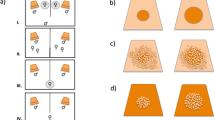Abstract.
The temporal reproductive patterns of both sexes within a breeding season of the hermit crab Pagurus filholi were investigated in terms of crab size. In their breeding season, line transect samples were made monthly to examine the reproductive activity of females. We also collected precopulatory guarding pairs as an indicator of male reproductive activity. The temporal occurrence of ovigerous females differed depending on their size, and the data from guarding pairs showed that the size of receptive females linearly decreased as season progressed. In males, usually large crabs took part in reproduction throughout the breeding season, except for the later period. A laboratory experiment showed that small individuals were more susceptible to predation than large individuals. Size-dependent reproductive activity in females suggested that females make different tradeoffs between reproduction and growth, depending on their susceptibility to predation. The lack of a clear pattern in males may reflect that large males are always dominant over small males in competition for mates.
Similar content being viewed by others
Author information
Authors and Affiliations
Additional information
Electronic Publication
Rights and permissions
About this article
Cite this article
Yoshino, .K., Goshima, .S. & Nakao, .S. Temporal reproductive patterns within a breeding season of the hermit crab Pagurus filholi: effects of crab size and shell species. Marine Biology 141, 1069–1075 (2002). https://doi.org/10.1007/s00227-002-0876-8
Received:
Accepted:
Issue Date:
DOI: https://doi.org/10.1007/s00227-002-0876-8




